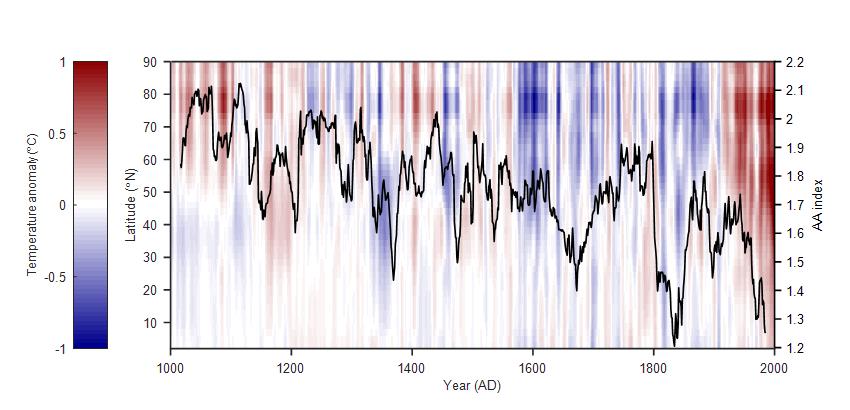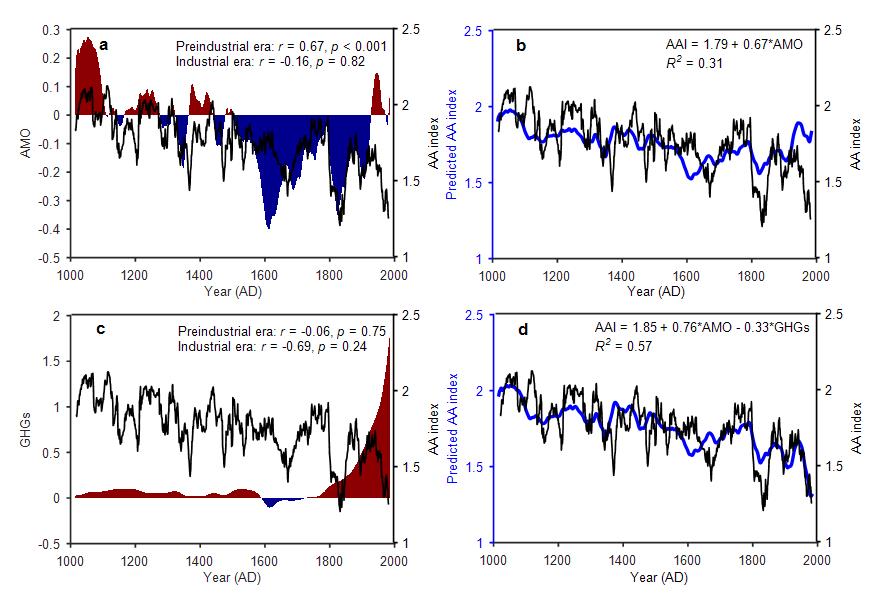Researchers Reveal Variations in Arctic Amplification Effect during Past Millennium
Updatetime:2022-04-11From:
【Enlarge】【Reduce】
The recent amplified warming in the Arctic during the last decades has received much attention. But how Arctic amplification (AA) has varied on longer time scales and what drives these variations remain unclear.
Recently, a study has provided a new perspective on the AA effect during the past millennium based on the best available paleoclimate data and novel data assimilation methods.
The study was published in Nature Communications on April 6. It was conducted by researchers from the Northwest Institute of Eco-Environment and Resources of the Chinese Academy of Sciences (CAS), the Institute of Tibetan Plateau Research of CAS, the Lund University and the University of Gothenburg.
The researchers produced a new millennium-long temperature reconstruction over the Northern Hemisphere by combining climate model simulations with newly available paleoclimate proxy records from the Past Global Changes 2k Network (PAGES2k) consortium, resulting in physically consistent and spatiotemporally continuous temperature fields.
Additionally, to quantify the variations in the strength of the AA, the researchers reconstructed a millennial AA index series, which revealed a significantly declining AA effect on the millennial time scale.
The millennial AA index series revealed that AA exhibited strong variations over a broad range of time scales, which can be explained, to a large part, by the phase of the Atlantic Multi-decadal Oscillation (AMO) and recent anthropogenic greenhouse gas forcing.
This result highlights the importance of the AMO and enhanced greenhouse effect in modulating AA, and suggests that there is predictability in AA on multi-decadal time scales.
The findings of this study may help fill the gaps in understanding the AA variation over the preindustrial era, improve the predictive ability of the Arctic and global climate change on the multi-decadal time scale, and distinguish the contributions of the natural variability of climate system and anthropogenic forcing to AA variation.

Figure. 1. Annual-mean zonal variability of the temperature anomalies over the NH during the past millennium and the reconstructed AA index. (Image by FANG Miao)

Figure 2. Co-variations between the reconstructed millennial AA index and GHGs forcing and AMO modes. (Image by FANG Miao)
Contact:
FANG Miao
E-mail: mfang@lzb.ac.cn
Appendix




